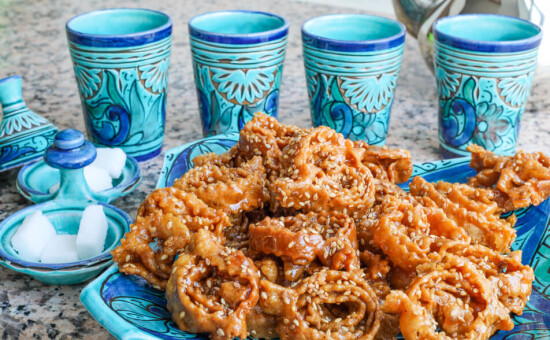The ultimate guide to Thailand’s candle festival, Khao Pansa
Khao Pansa in Ubon Ratchathani is a lesser-known yet exhilarating candle festival in Thailand. Here’s everything you need to know about this fun event.
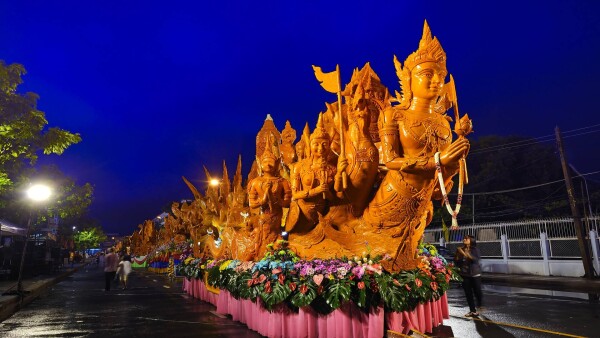
Illustrating religious tales, brilliant garuda sculptures of half-bird half-man eagles and giant Yak demons reflect in rainwater pools. Parade floats with colossal, meticulously carved beeswax candles go at walking pace, passing by to the sound of light-hearted, Thai folk ditties, and the air is filled with tantalizing aromas of succulent meat.
Welcome to Khao Pansa Candle Festival in Thailand, a two-day celebration that heralds the green season year after year. Though lesser-known among foreigners, the Thailand candle festival is the largest wax stick parade in the Kingdom, held to mark the spiritual renewal the wet season carries.
When is the Khao Pansa candle festival celebrated?
One of the most significant Buddhist festivals in Thailand, Khao Pansa is deeply rooted in traditions and takes place annually at the beginning of the Buddhist Lent in late July. It starts on the first day of the waning moon of the eighth month in the Thai lunar calendar and ends a day later. In 2021, this happens to be the 24th and 25th of July.
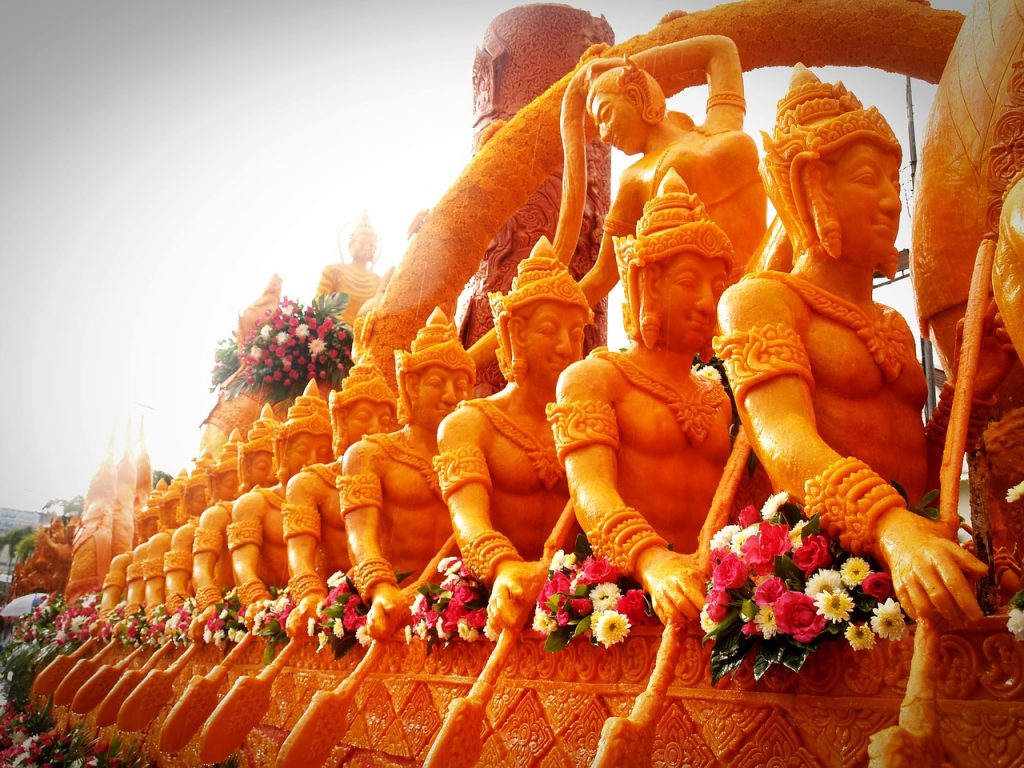
Following dance performances, the candle procession is Ubon Ratchathani’s most prominent event and appeals to locals and tourists alike. For two days, droves of people gather to marvel at legendary wax figures, dance to Thai folk music, or watch theater shows and Muay Thai fights.
Foodies also get their money’s worth. From meats that come in a mouth-watering variety of spicy tastes, grilled on a skewer, to sticky calorie bombs and well-seasoned Som Tam – Thai people’s beloved papaya salad – there’s street food galore.
What is the cultural significance of Khao Pansa?
Thai people have used candles to illuminate their homes for ages, and despite electricity, their power has stood the test of time.

It was centuries ago when locals worried about meeting snakes in rice paddies due to heavy monsoon showers. Lord Buddha advised them to stay in their own four walls, and that’s how the custom of offering candles to monks began because many of them lived and still live without electricity. The holy men would shelter, read, and meditate in the glow of candlelight.
Over the years, rather than donating standard candles, residents started to carve wax into intricate figurines. In 1940, denizens upped their game and competed in a good-natured manner for the most staggering wax offering, and the Khao Pansa candle festival in Ubon Ratchathani was born.
Today, people pay homage to deities and join festivities as wax chariots with deftly carved divinities are pulled through streets. The festival’s first day commemorates Buddha’s initial sermon about Buddhism’s Four Noble Truths he gave to five followers. The second day is the start of what foreigners call Buddhist Lent or vassavasa. This is a three-month period where monks meditate daily in their temples, shun the outside world, and fast and reflect to experience spiritual renewal in the rainy season.
Where in Thailand is Khao Pansa celebrated?
Set on the banks of the Mun River 380 miles from Bangkok, the city of Ubon Ratchathani hosts the annual candle festival. “Ubon,” as it’s called, is one of the four main cities of the Isan region in Thailand’s northeast, and that is well worth visiting, not just because of the candle festival.
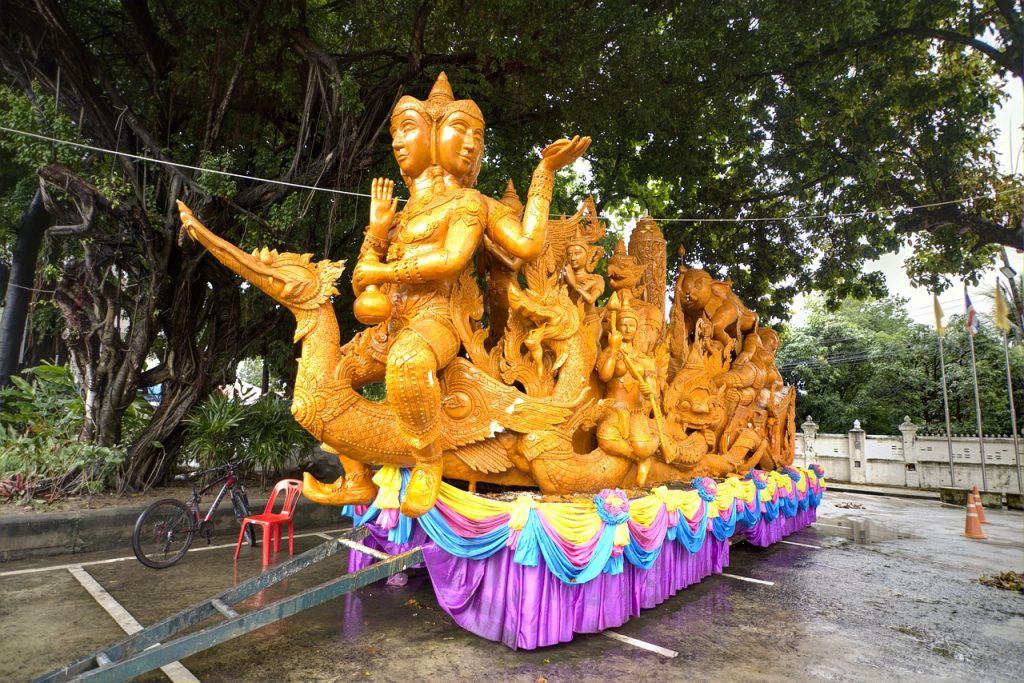
Only a short drive from Ubon, you’ll find natural wonders such as Sam Pan Boak, the Mekong River’s largest rock reef, also referred to as “The Grand Canyon of Thailand.” And with its dense dipterocarp forests and rock art on cliffs above the Mekong, Pha Taem National Park is another sight for sore eyes you don’t want to miss.
If you’re a railway buff, you can ride an overnight train to Ubon from Bangkok. If you’re traveling on a shoestring, you can also book a flight with Nok Air, one of the cheapest airlines.
Some tourists explore Thailand’s central region first and travel from either Bangkok to Ayutthaya or Bangkok to Saraburi, then jump on a bus from there to Ubon Ratchathani. Others prefer to take the Chiang Mai to Ayutthaya route to admire ancient ruins before getting to Ubon.
Either way, visiting Ubon Ratchathani, you can get an authentic slice of Thai culture, far away from the hectic life of metropolises and beach towns.
Here are the most popular routes:
| Routes | Price |
|---|---|
| Bangkok to Ubon Ratchathani | Starts at US $14 |
| Bangkok to Nakhon Ratchasima | Starts at US $8 |
| Chiang Mai to Nakhon Ratchasima | Starts at US $24 |
What can you expect at Ubon’s Khao Pansa candle festival?
Experiencing Khao Pansa with its myriad of candles snuggled into mythical creatures and lotus flowers, you’re in for an explosion of colors and sounds. It takes up to three months for artisans to craft Buddha and angel sculptures on supported wood, coat them with wax, and adorn them with glorious Thai components. Engulfed by intricate naga snakes, many parade floats feature garuda eagles at the bow. Besides, each vessel symbolizes a local temple, institution, or district.

Once the procession starts, skillfully carved Thai figures portraying Buddhist and Hindu tales will catch your eye as 15-feet high wax castles spanning 60 feet parade through Ubon’s streets. One mythical story you’ll love is the legend of the Himmapan forest, home to the Nariphon tree on the foothills of Mount Meru, a tree that bore fruits the shape of young females in Buddhist mythology.
You’ll see both adults and school kids clad in traditional attire dancing in time to Thai folk music and hear rhythms of drums and khene, a mouth organ from Laos made of bamboo, to extol the King and rural culture.
Also, it’s common for young boys to ordain as monks during the two-day spectacle, even if only for a couple of days. That’s because the people of Ubon share a culture and dialect similar to that of neighboring Laos, and the boys feel proud to be part of a Buddhist celebration. You can expect to hear peaceful chants throughout the city and are welcome to watch ceremonies at temples.
How can you make the most of Khao Pansa?
Since Khao Pansa is a religious festival, the serving of alcohol is restricted. Also, bear in mind that you’re supposed to wear clothes that cover your shoulders, and shorts and skirts should be longer than knee-length.
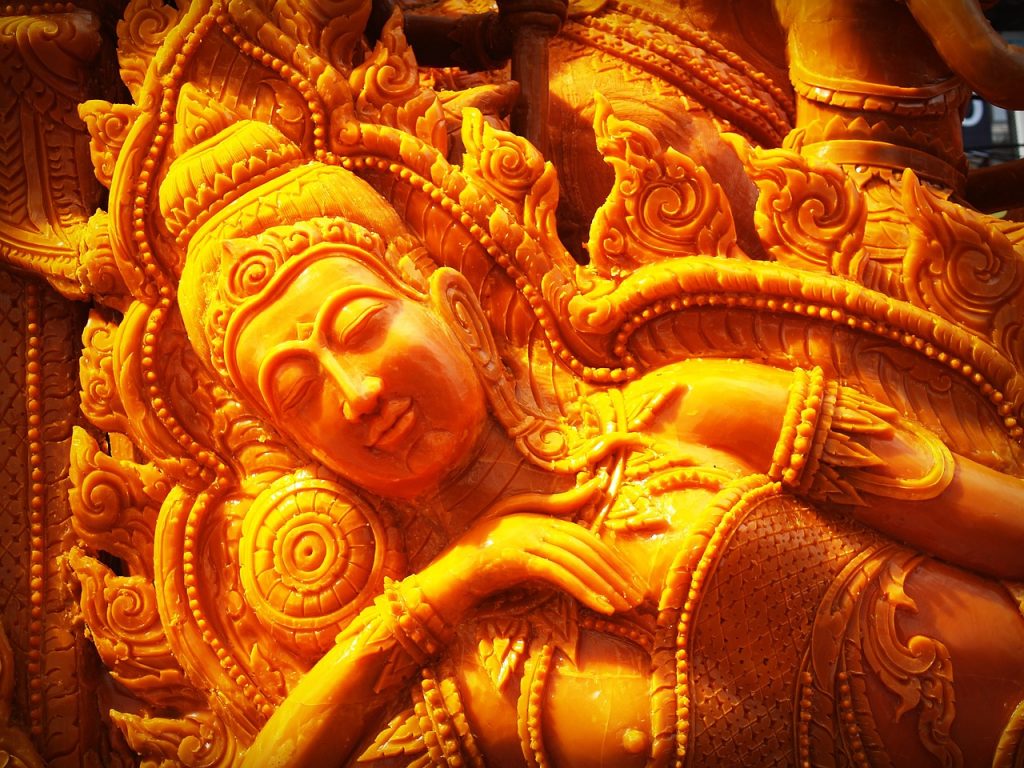
We also recommend booking your trip and accommodation early as this is a top-rated event. Do arrive ahead of schedule, so you don’t miss the opening ceremony. On the evening before the procession, you can see the wax castles up-close at Thung Si Muang Park, where judges give their vote for the best offering.
Gaping at holy, slick-skinned sculptures that glimmer under the street lamps, you can imagine what witnessing the procession on the following day will be like when the roads are shiny with puddles. You’ll anticipate the moment when golden half-bird half-man eagles and giant Yak demons reflect in rainwater pools, bringing mythical stories to life. And you will hardly be able to wait for floats parading to the sound of cheerful Thai folk songs, drowning Ubon in an exuberant sea of beeswax candles.





